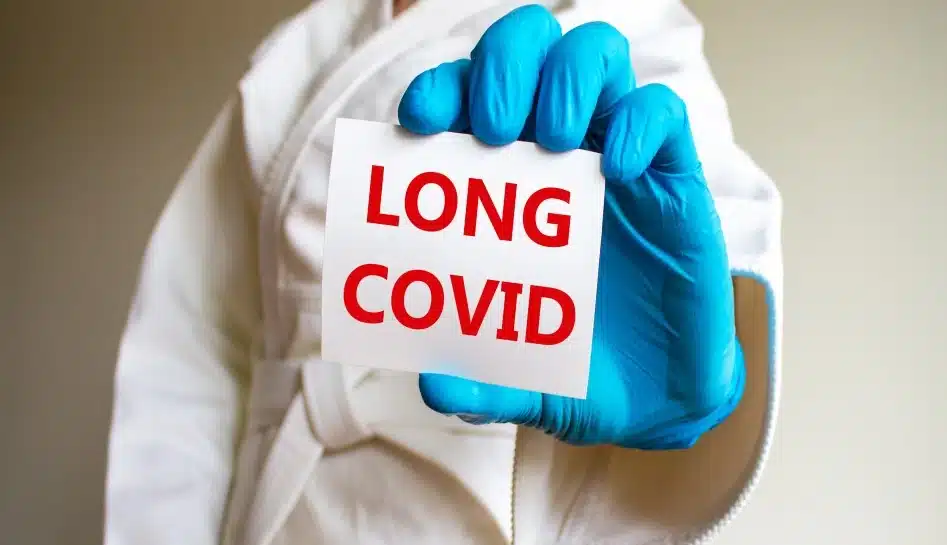Between 7.7 and 23 million Americans suffer from Long COVID, and roughly one million people are unable to work due to it at any given time
People with Long COVID have symptoms that persist for weeks or months after an acute infection. A report released by the US Department of Health and Human Services (HHS) earlier this month revealed that 7.7 to 23 million Americans have Long COVID, and that at any given time, about one million people may be unable to work due to the condition.
The US government has taken steps to support long COVID patients after the HHS guidance said that the condition can be a disability under the Americans with Disabilities Act of 1990.
Some Long COVID patients may qualify for Social Security Disability Insurance (SSDI) if they meet certain requirements. The Center for Disease Control and Prevention (CDC) has developed Long COVID guidance for health care providers and the public. Another HHS agency, the Administration for Community Living, published a guide to community-based resources to help connect affected people to services like transportation and personal care attendants.
On August 3, 2022, the US Department of Health and Human Services released two major reports in response to a presidential memo calling for a whole-of-government response to the SARS-CoV-2 sequelae known as Long COVID.
Talking to JAMA Editor Chief Kirsten Bibbins-Domingo, Assistant Secretary for Health in US Department of Health and Human Services, Rachel L. Levine said the take home message is that Long COVID is real.
“The first report is on the services and supports for longer-term impacts of COVID-19. This outlines federally funded support and services for individuals experiencing the longer-term effects of COVID-19 in the areas of Long COVID and associated conditions, but also mental health and substance use as well as bereavement,” said Dr Levine who is also a physician and a paediatrician. “The second report is the National Research Action Plan on Long COVID, the research plan. And this proposes a comprehensive and equitable research strategy to inform our national response to Long COVID.”
Dr Levine described Long COVID as “signs, symptoms and conditions that continue or develop after a COVID-19 or SARS-CoV-2 infection.”
Long COVID, according to the CDC, is the occurrence of new, returning, or ongoing health problems for four or more weeks after an initial infection with SARS-CoV-2, the virus that causes COVID-19. It is also known by other names, including post-acute COVID, post-COVID conditions, and chronic COVID.
Symptoms of Long COVID vary from person to person. They may include fatigue, cognitive impairment (or “brain fog”), muscle or joint pain, shortness of breath, heart palpitations, sleep difficulties, and mood changes. Long COVID can affect multiple organ systems and cause tissue damage.
“We’re gaining confidence from the data that between 5 and 30% of persons with COVID-19 will experience some form of Long COVID,” Dr Levine said. “Whether high or low, short or long term, these health consequences represent a substantial impact on our patients, but also a substantial impact on our health care system.”
Researchers do not yet fully understand the risk factors, causes, and effects of Long COVID. Risk factors include pre-existing conditions, such as type 2 diabetes. Severity of COVID-19 may also be a predictor, although people with mild or asymptomatic infections can also develop the syndrome. Whether vaccination for COVID-19 reduces an infected person’s risk of developing Long COVID is unclear. Some studies have suggested that vaccination reduces risk by up to 50 percent, while others have found no reduction in risk.
Researchers have identified several possible causes of Long COVID and have suggested that causes may vary from person to person. For some, COVID-19 may cause the body to produce an antibody that mimics SARS-CoV-2 and triggers an autoimmune response in which the immune system attacks its own antibodies. For others, SARS-CoV-2 virus may persist in the body and cause symptoms. Another possible cause is organ damage from COVID-19. Research also suggests that microclots may form in blood vessels, blocking blood flow and causing tissue damage. And COVID-19 may disrupt the immune system and reactivate other previously contracted viruses.
Researchers in the US are working to develop methods to reliably diagnose and treat long COVID. Healthcare providers may use COVID-19 antibody tests in an attempt to confirm previous infection, then rule out other conditions that may cause similar symptoms. Treatment strategies are based on patients’ specific symptoms and may include existing therapeutics, such as steroids or anti-inflammatory medication. Trials are underway to test new therapeutics for long COVID patients.

















